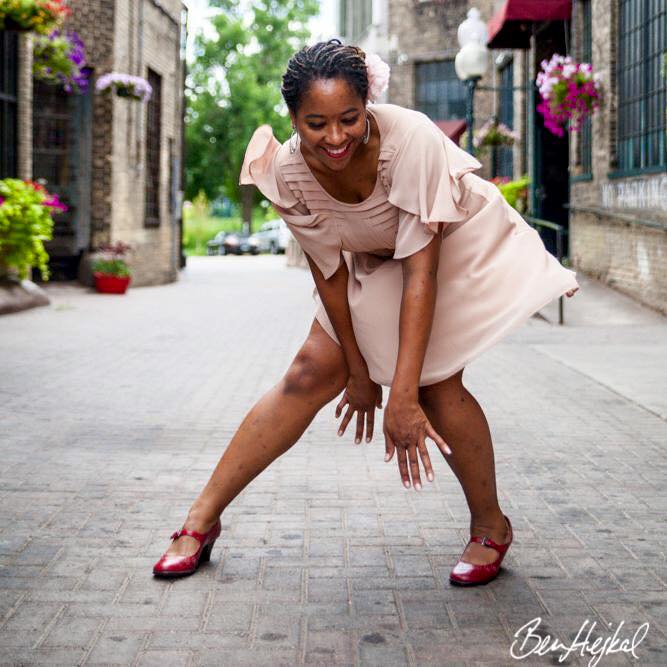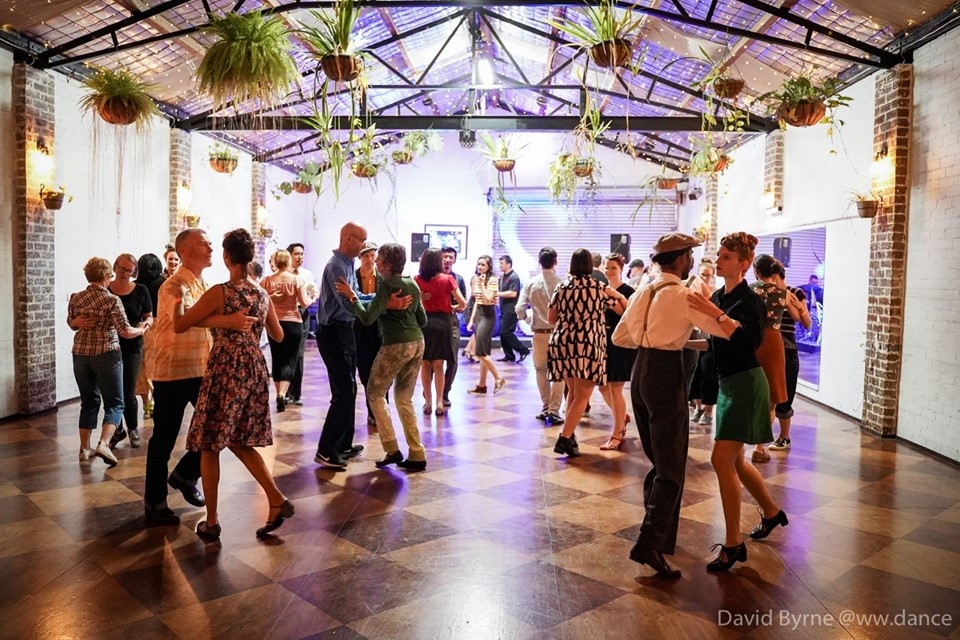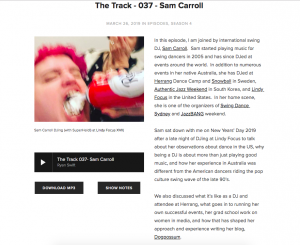Basically, it’s just moving around the dance floor in closed, doing whatever rhythms you like.
“Just grab your partner and move over the floor”
I’ve been in classes with all sorts of teachers, who’ve taught it in different ways. Because it’s so simple, you can adapt it to teach all sorts of skills and concepts.
eg when we teach our week 1 beginners, they do solo jazz warm up, then solo rhythm work, then we change gear completely, and get them to partner up and try gliding. We usually start with music on, but with no specific rhythm. We literally just demo what we want them to do, then say ‘try this’.
After a few minutes or a song, and they’ve rotated a bit, we do the “here are some things we saw that were really cool,” and we focus on the things we want to see more of – eg stopping to apologise when you kick someone.
That last one is REALLY important, not just for good social skills, but also because it encourage them to think about where their body is in space, in relation to other moving objects. This is the great thing about gliding: you move all over the floor. So students have to learn about moving through space without bashing into people. And if they _do_ hit someone, they have to recognise that, stop and see it as significant, then make contact with the other people in the room to apologise. And then they reset with their partner to start again.
Then we may point out that someone has started adding in the rhythm from earlier (someone always has), and we ask everyone to try it.
We add in the rock step around about here, after a bit of practice on this, because someone always asks “How do you change direction?” And we introduce the rock step as a good direction changing tool.
Having them all over the floor is also great, because when you say “Please ask someone else to dance,” they learn to move around and ask new people to dance. If you’re using a small floor (joy), it really feels like a laughing, happy party. And that gives them a good taste of how much fun dancing is. It’s also a relatively simple task, so they get confident and have good feels. Teaching win.
And so on.
The specific limitations or tasks you ask them to consider really depend on what you’re teaching. eg I’ve done this in higher level classes where we’ve been asked to _not_ rock step, or to use only a specific rhythm. Heck, peabody is just gliding, but at SPEED.
In terms of dance nerdery, I really like gliding both partners are moving in the same direction at the same time. There’s not the obvious compression and extension that you get when you introduce rock steps. This is a kind of ‘pre-lindy hop’ historical moment (in my brain).
When you add in rock steps (and hence compression/extension in closed, if you like nerd concepts), they level up their physical abilities, and also move through dance history, away from that ‘always flowing in one direction’ type of dance. They start experimenting with staying in one spot on the floor. Once you have that physical limitation, you can see how swing outs happened: if you can’t have fun moving across the floor, you need to have fun on the spot. And rotating on the spot (a good circle) is a way to have energetic fun in a small space.
You can signal this historical stuff if you want, which makes them think about dance in social context. Or you can signal the technical stuff, which makes them think about dance as biomechanics. Or you can signal the music changes, and have them think about the dance as music.
And so on and so forth.
[We do find that after a chunk of this they want some clear structure or a solid ‘move’. Promenades are a good option here, or flip flops.
eg at 0.53 Asa and Daniel bring the flip flopping shit. Actually, this video is great for lots of closed position ideas.]




